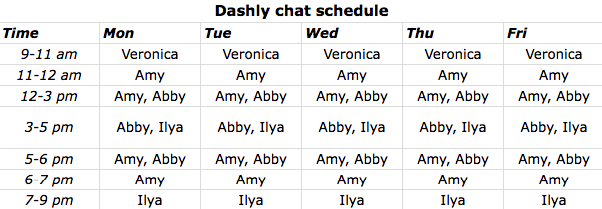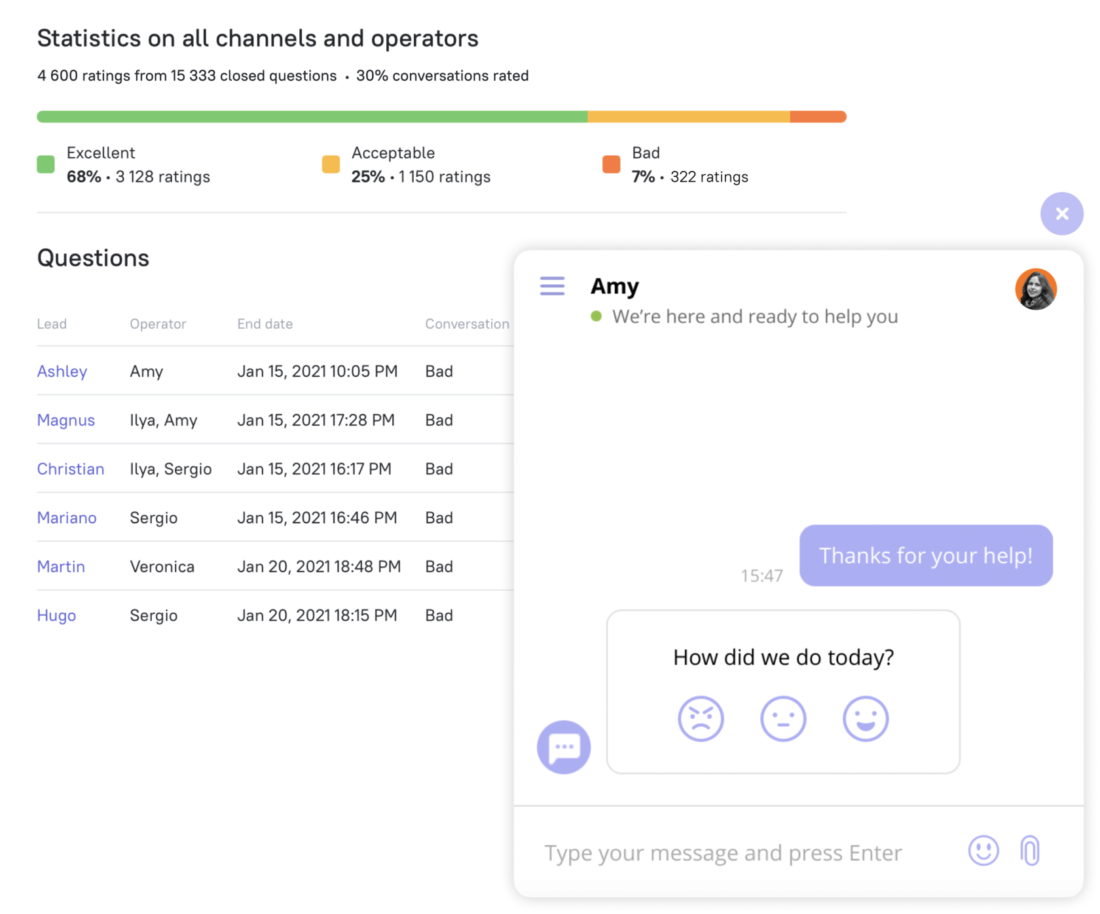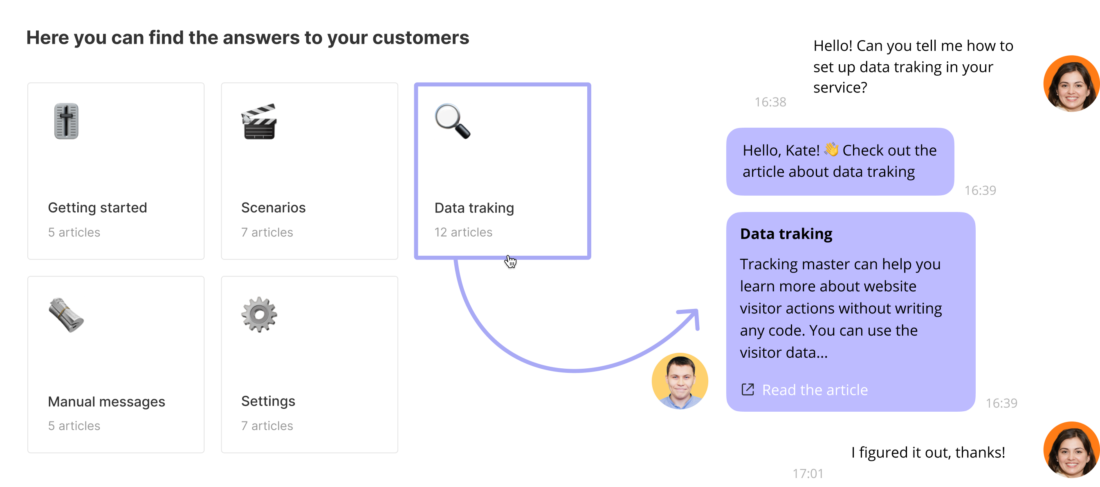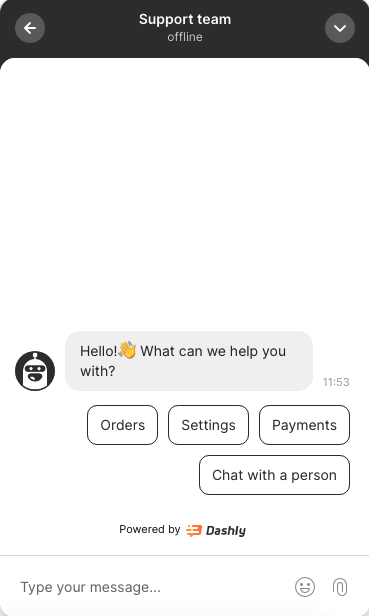11 steps to succeed as a new head of support

“I was appointed a head of support. Where do I start?”
If that’s the question bothering you, this article is for you.
In 2020, the Dashly support team got a new head, Sergio Rosetti. Prior to that, he’d worked in the Dashly sales team for 1.5 years and introduced a number of new team processes. Overall, Sergio had 8 years of team management experience behind his back.

Two years later, the support team led by Sergio:
- grew from just a Support team to a Support/Success team;
- reduced user Churn Rate by 29%;
- increased the number of additional sales by 20%.
Intrigued to know how to reach the same or better results?
Here are 10 tips that will help you get the hang of a new role as the head of support. The first two tips are for those who never worked with a customer service team or done it in another company. The rest of the tips are good for any new head of support.
1. Get a handle on the workflow
If you’ve become the head of a team that has existed for some time, don’t rush to change everything. Team processes are probably already working well, and sudden changes will be stressful for support agents.
First, understand how:
- the team works;
- agents distribute the areas of responsibility;
- the workday is structured.
2. Get into support agent shoes
When you got an outside perspective on the team’s work, dive into the internal processes and work as a live chat agent for a few weeks. This will help you understand what the team faces every day. You’ll find out:
- what questions users ask;
- which ones are most often repeated;
- what the workflow of dealing with questions is;
- how users react to it.
Read also: 17 Zendesk alternative services and 13 live chat alternatives to try this year
3. Talk to the team
Most likely, neither a company nor your new team was created yesterday. So it’s essential to ask people how everything works and whether they like their tasks.
The best you can do is to invite team members to a one-on-one conversation and discuss:
- the way they work in a team;
- what they enjoy;
- what annoys them.
This will help you find bottlenecks in the processes that negatively affect team productivity. And these weak spots are easier to find in a discussion rather than on your own.
Success story from Sergio Rosetti, the Head of Support team at Dashly
“When I came to the company, I dug into the processes myself. Then I decided to talk to the team members individually and assess how satisfied they were with the processes.
It turned out that one was tired of working with documents, the other didn’t like working on the weekends, etc. The daily routine wasn’t planned well enough. Agents had to write to the corporate messenger chat to find out who was in place or to take time off for lunch. It was a mess, inconvenient for everyone.
I also learned what side tasks each of the team members had. It turned out that one team member writes articles for Dashy’s knowledge base, the other one calls churning customers, or, say, deals with the more technical questions about the product, etc.
Thus, the first decision was to create a live chat schedule for the agents. As a result, everyone could do additional tasks and there was no need to negotiate the lunch break. The working process got transparent and accessible.

We’ve also set up a weekend schedule. That way, agents:
- no longer need to check if there’s someone in place;
- know exactly when they have lunchtime;
- have 2–4 hours a day doing something except answering in the live chat;
- don’t work full time on weekends — everyone is on duty for 1 hour only, once a month, on Saturdays and Sundays, including me, Head of Support.”
4. Define metrics to measure live chat performance
Why are metrics important? They help:
- evaluate agents’ work;
- find bottlenecks in the team’s processes;
- improve the team’s efficiency.
Typically, support teams track at least key performance indicators. If your team does not track them, we recommend you start.
Many companies try to reduce the response time. That’s not the best strategy. I wouldn’t strive to improve this metric if your clients don’t complain about slow chat service. But I’d take the current figure as the standard, so we can maintain it.
We used to reply in 7 minutes [in Dashly] simply because it worked out that way. Thus, it became a standard, and now we try not to be slower than that.
We’ve decided on two main metrics to track: first response speed and average agent rating. You can monitor them as well after Dashly’s code installation.

Dashly offers team performance reports where you can see:
- speed of the first response;
- average rating of chat agents;
- workload by hours;
- the number of new and solved issues;
- questions’ distribution by channels, etc.
For example, user satisfaction can be easily tracked with the agent rating system and NPS surveys. They help you understand how satisfied customers are with your product. You can ask to rate your services and leave a comment. This way, you’ll be able to identify issues that otherwise go unnoticed.
Such surveys will also help you find support and the product’s weak points. We recommend holding a survey monthly or quarterly.
Read also: The secret weapon of your competitors or Why you should focus on customer service first
5. Get the team processes up and running
So you found out how agents work in the chat, how they interact with each other, and how the team workflow is structured. Now you can start optimizing it.
The main task of the support agent is to respond to incoming requests. Therefore, for starters, you can automate responses in the chat.
You can do it in three easy steps:
- identify frequently asked questions;
- compile knowledge base articles on these topics;
- send links to articles as answers.
This practice frees agents up for more complex queries. The knowledge base is available in Dashly.

You can also set up a chatbot for business that will answer users’ questions 24/7. It will deal with:
- delivery and payment issues;
- FAQs on service functionality;
- pricing and paid plans questions;
- demo requests.

Sign up to test how it works 7-days free.
Read also: 15 best lead generation services to grow your base in 2023
6. Test the changes
Before you implement any changes in the team, it’s better to test them by developing and testing hypotheses. This way, you can clearly define the goals of these changes and map out the way to them.
Here are some successful hypotheses that we tested:
Example 1. 90% of clients who had a quota overrun once canceled their subscription after the second overrun. The goal was to prevent the churn of these clients, and ultimately we wanted to switch them to a more suitable payment plan directly during a call.
The fix: track and react proactively to all clients who have not yet been billed but have already had a quota overrun.
Result: +33% of additional sales.
Example 2. We wanted to know if our knowledge base is user-friendly enough and if we should rewrite any articles. So we set up a pop-up with a suggestion for the site visitors to rate an article.
Based on the ratings, we made a list of “bad” articles based on the ratings. For example, an article on installing Dashly on the site was incomprehensible to users: the rating was 3/5. And mind you, installation is one of the main steps in the users’ path.
The fix: we screenshots from the dashboard to the article and structured it, elaborating on every step.
Result: the average article score became closer to 5.
It takes 20 tested hypotheses to find two successful ones. Here with the support team, we generate and test one hypothesis every two weeks. There are no rules, though. What works for one business might not work for another.
7. Introduce team building activities
The support team spends most of their time processing chat requests. Agents get stuck in a routine and can burn out quickly.
To prevent it, the team needs to set up regular meetings and activities that will help:
- feel the team spirit and get some support;
- analyze some complex cases and lowlights;
- share the observations and suggestions with the team leader and team members;
- sync the processes.
In our experience, even one team call a week helps agents feel better, share their ideas and worries, and not burn out.
I often initiate one-on-one conversations with the team members to sort out problems related to teamwork or chat processes. A brief discussion in text messages isn’t enough. You should immerse yourself in the issue, listen to the employees’ reasoning and resolve the issue together.
8. Engage support team with other teams
When clients encounter service issues, it might take more than live chat agents to solve them.
Imagine the situation: some button doesn’t work as expected. Every day, agents have to deal with related complaints. They assure the clients the issue will be solved and forward this request to the product team. Product managers promise to fix everything, but they also have other important tasks to deal with.
As a result, agents don’t provide clients with an immediate solution. So naturally, they get annoyed. That means bad ratings to the agents and churn.
To avoid it, you need to improve the interaction between the teams. Agents should know when the task is completed and what they can say to the clients.
In Dashly, we set up the following process for reporting bugs:
- The developers divided bugs into categories depending on their urgency: either till the end of the week or in the next week. We came up with the criteria to determine which category a bug belongs to.
- When agents encounter a bug, they put it to an assigned Slack channel: they describe the bug in detail and specify which category it belongs to.
- Then, a bug card is created in Favro, the task management product we use. This happens automatically thanks to Favro’s integration with Slack. Developers check the bug category to understand which ones are more urgent.
- In the card, developers set the task status, so the agents understand how the work is going and how soon developers will fix the bug. This way, they can give a clear response to clients.
Read also: 10 conversion rate optimization tools to enhance your funnel and boost revenue
9. Evaluate conversations monthly
- Do the agents comply with your company’s tone of voice politics?
- What kinds of problems do they solve?
- What are the most common requests?
To answer these questions, the head of the team should review live chat conversations once a month, find areas of concern and discuss them with the team.
It’s convenient to look through the dialogues in Dashly. Users’ chat history from all channels is collected in one interface. You won’t lose any messages, and you don’t have to switch between tabs.
In Dashly, you can tag conversations to:
- group and filter them;
- quickly find them in the list.
Thanks to tags, you can see the most common questions in the Team performance report. You can add explanatory articles to the knowledge base. They will help agents answer those repetitive questions more promptly.

Read also:
How to Master Sales Funnel Management: A Complete Guide
The Ultimate Guide to Building a Sales Funnel Template
10. Educate yourself and train your team
Look for growth opportunities and arrange team training. Again, reviewing conversations will help train the team as well. Analyze how agents communicate with the client: do they simply answer the question or try to move up the funnel and increase the client’s loyalty to the company?
Success story from Sergio Rosetti, the Head of the Dashly Support team:
“While analyzing conversations, I found a certain problem: agents are good at support, but not very good at sales. But they can also sell the product. It’s not always necessary to transfer the client directly to the sales team.
For example, it’s the client’s first day using Dashly. An agent should:
- create comfortable conditions for using the product;
- define the problem clients try to solve with the product;
- help understand the product so that the client ultimately decides to buy it.
To get better at sales, we introduced role-playing. It’s an imitation of the agent’s communication with clients. One agent gets the role of a potential client, and another one acts as a live chat agent.
We learned what to pay attention to and what questions work best thanks to role-playing.
We also divided our clients into three categories:
- not registered;
- registered, but not paying;
- paying for a subscription.
Those who have paid for a subscription are your main client segment. After they’ve made a purchase, they always start actively asking questions in the live chat. Thanks to conversation reviews and role-playing, we understand what we do well and what mistakes we make when communicating with such users.”
To plan the team training, watch how the team works and how customers see your company.
For example, one company may have an average first response time of 10 minutes, while another one replies in 7. Yet, in both cases, customers are satisfied with everything, judging by the reviews and ratings. This means that companies don’t need to push their teams and invest in training in this direction. Analyze your case specifically, and communicate with the team to understand the direction you all need to move in.
11. Learn from other companies’ experience
Checking how other companies work and what they do can be very helpful. First, visit the sites of market leaders and write to their live chat to see how they communicate with customers.
Find Heads of Support communities, or reach out to them personally. That may help you discover effective processes other companies use and adapt them for your team.
Read also:
👉 Live Chat Best Practices: 20 Hacks to Make Customer Service Better
👉7 Best Live Chat for eCommerce: Boost Conversion on your Website
👉 Top 5 live chat mobile app: find the best fit for your business
👉 Live Chat: How Online Chat Tool Can Help Your Business
👉 20 Best Live Chat Software for your website chat service












